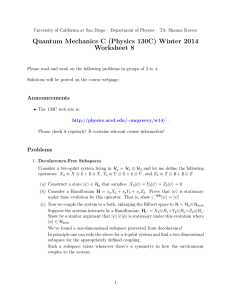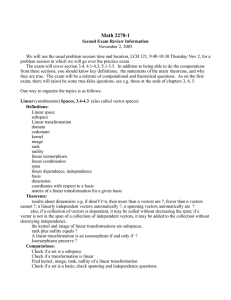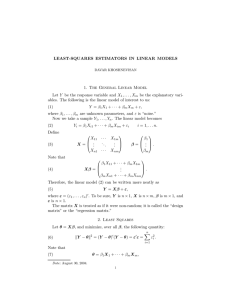Math 2270-3 Spring 2005 Information for Exam II
advertisement
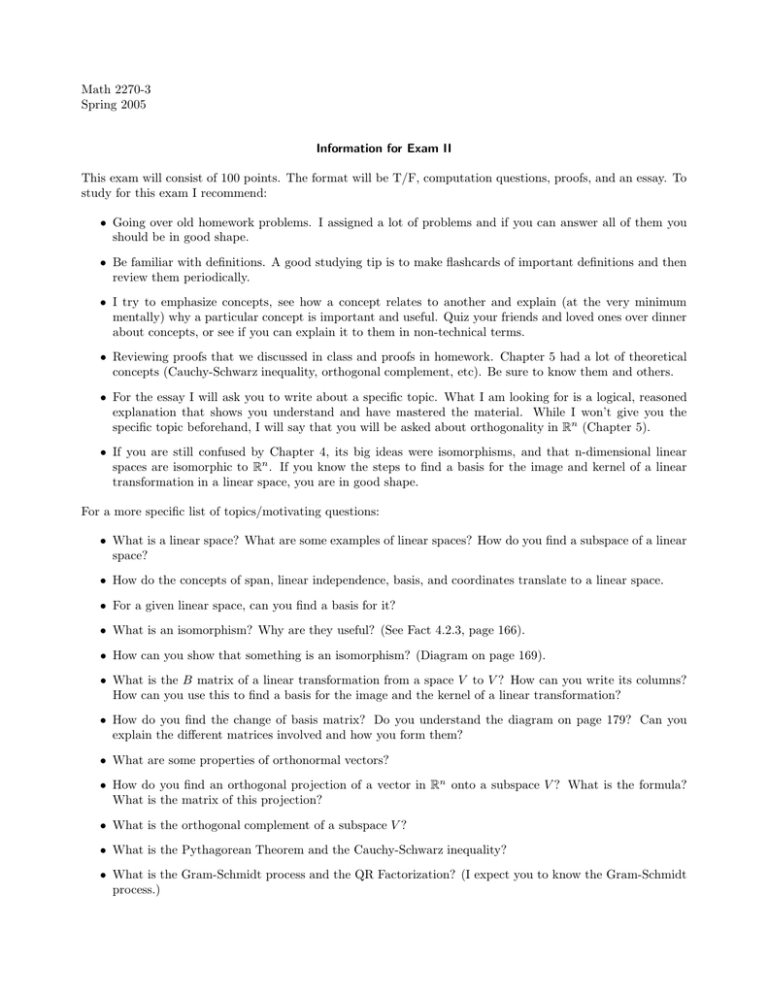
Math 2270-3 Spring 2005 Information for Exam II This exam will consist of 100 points. The format will be T/F, computation questions, proofs, and an essay. To study for this exam I recommend: • Going over old homework problems. I assigned a lot of problems and if you can answer all of them you should be in good shape. • Be familiar with definitions. A good studying tip is to make flashcards of important definitions and then review them periodically. • I try to emphasize concepts, see how a concept relates to another and explain (at the very minimum mentally) why a particular concept is important and useful. Quiz your friends and loved ones over dinner about concepts, or see if you can explain it to them in non-technical terms. • Reviewing proofs that we discussed in class and proofs in homework. Chapter 5 had a lot of theoretical concepts (Cauchy-Schwarz inequality, orthogonal complement, etc). Be sure to know them and others. • For the essay I will ask you to write about a specific topic. What I am looking for is a logical, reasoned explanation that shows you understand and have mastered the material. While I won’t give you the specific topic beforehand, I will say that you will be asked about orthogonality in Rn (Chapter 5). • If you are still confused by Chapter 4, its big ideas were isomorphisms, and that n-dimensional linear spaces are isomorphic to Rn . If you know the steps to find a basis for the image and kernel of a linear transformation in a linear space, you are in good shape. For a more specific list of topics/motivating questions: • What is a linear space? What are some examples of linear spaces? How do you find a subspace of a linear space? • How do the concepts of span, linear independence, basis, and coordinates translate to a linear space. • For a given linear space, can you find a basis for it? • What is an isomorphism? Why are they useful? (See Fact 4.2.3, page 166). • How can you show that something is an isomorphism? (Diagram on page 169). • What is the B matrix of a linear transformation from a space V to V ? How can you write its columns? How can you use this to find a basis for the image and the kernel of a linear transformation? • How do you find the change of basis matrix? Do you understand the diagram on page 179? Can you explain the different matrices involved and how you form them? • What are some properties of orthonormal vectors? • How do you find an orthogonal projection of a vector in Rn onto a subspace V ? What is the formula? What is the matrix of this projection? • What is the orthogonal complement of a subspace V ? • What is the Pythagorean Theorem and the Cauchy-Schwarz inequality? • What is the Gram-Schmidt process and the QR Factorization? (I expect you to know the Gram-Schmidt process.) • What is an orthogonal transformation? What are its properties? • What is the transpose of a matrix and what are its properties? • What is a Least Squares solution to Ax = b? How do we find it through the normal equations? • What is an inner product space and how do we find the projection onto a subspace W?


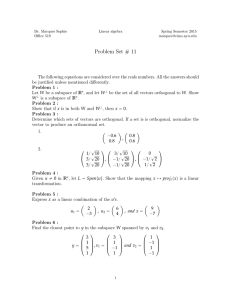
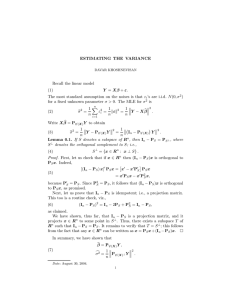
![= t1 [0, -1/3, 0, 1] (page cut off)](http://s2.studylib.net/store/data/011271865_1-e5f108751ec3c741c670be13242bd0fc-300x300.png)
